It all started with a simple idea- what if we made a high-fashion model picture using only AI by typing a description and letting the AI image generation software do the work? It seemed like a big challenge, maybe even impossible, but AI tools are improving daily, so I wanted to see what they could do.
I wrote a detailed prompt: a stylish model in a black outfit, dramatic studio lighting, soft shadows, and a blurry background. I wanted to try and generate an AI picture that looked just like a real professional photo. My colleagues, Eva and Tetiana, helped out. We each tried different AI tools to see which one could make the most realistic image.
There are lots of AI picture generators out there, like the ones made by huge companies like Adobe, Meta, and Microsoft, so picking the best one wasn’t easy. Some AI tools were good at setting up the picture but bad at details. Others made super-detailed images that didn’t look real. The question was which AI could generate a fashion photo that looked like it belonged on the cover of Vogue?
AI-generated pictures are everywhere, but there’s a big question: who owns them? If you type a description and AI makes a picture, is it yours, or does it belong to the company that created the AI image generator? The rules aren’t clear yet, and this is causing problems for artists, designers, and content creators.
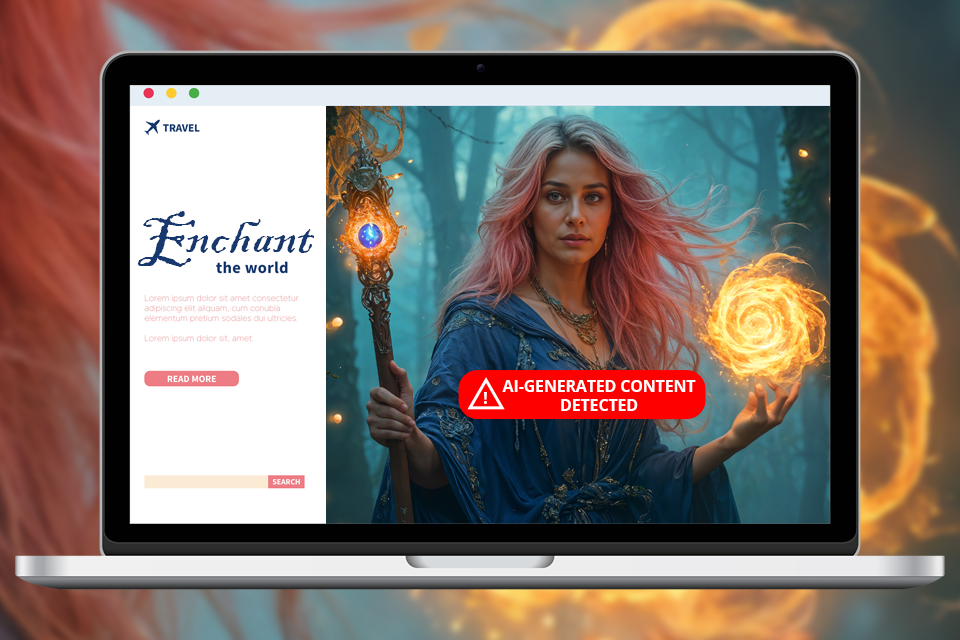
Some AI companies claim the pictures belong to the user, but others keep some rights or add hidden watermarks to track AI-generated images. This can be a problem for professionals who want full control over their work.
Imagine spending a long time perfecting an AI picture, only to find out the AI company still has rights to it, or worse, the image gets flagged as AI-made and removed from a website.
Since AI tools are changing fast, people need to be careful. Before using AI pictures for work, it’s smart to check the terms. No one wants to lose ownership of their creations or accidentally use an image that could cause legal trouble.
I tested Freepik’s AI image generator for our fashion photo experiment, and it surprised me in a good way. The model it created had a natural pose, realistic skin, and cool studio lighting just like I asked. Some AI tools for designers make faces too smooth, but Freepik kept important details sharp, like the eyes and fabric.
It wasn’t perfect, though. Some parts, especially around the hair, looked a little blurry and fake. But since Freepik is mostly made for stock-style images, it did a great job at making quick, stylish pictures without much effort.
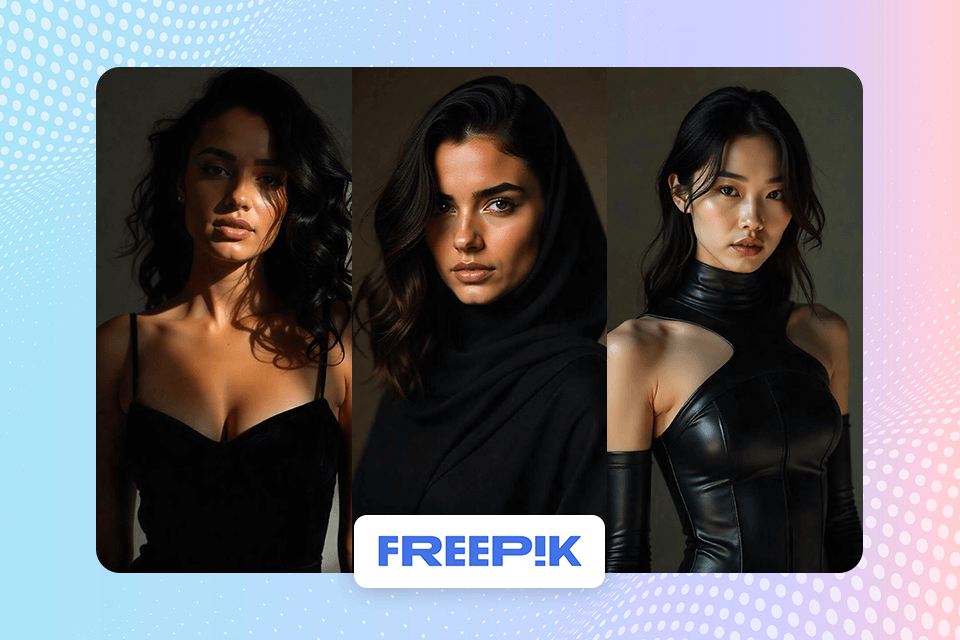
The result I got in Freepik
Main Freepik features:
Pricing options:
Adobe Firefly has quickly become one of the most versatile AI platforms for creators. Unlike other tools that simply generate images, Firefly offers a full creative suite that includes image generation, audio tools, and even recently updated AI-powered video creation — all in one place.
During our team test, we worked on a portrait of a stylish model in a black outfit under dramatic studio lighting with soft shadows and a slightly blurred background. My colleagues, Eva and Tetiana, joined me to see which AI tool could make the most realistic photo. Firefly stood out immediately — its Generative Fill, Content-Aware Editing, and Style Reference features made the textures and lighting look incredibly natural, especially on fabrics and skin tones.
The Adobe Firefly ai art generator in Photoshop now feels more polished than ever, seamlessly blending creative freedom with realistic detail.
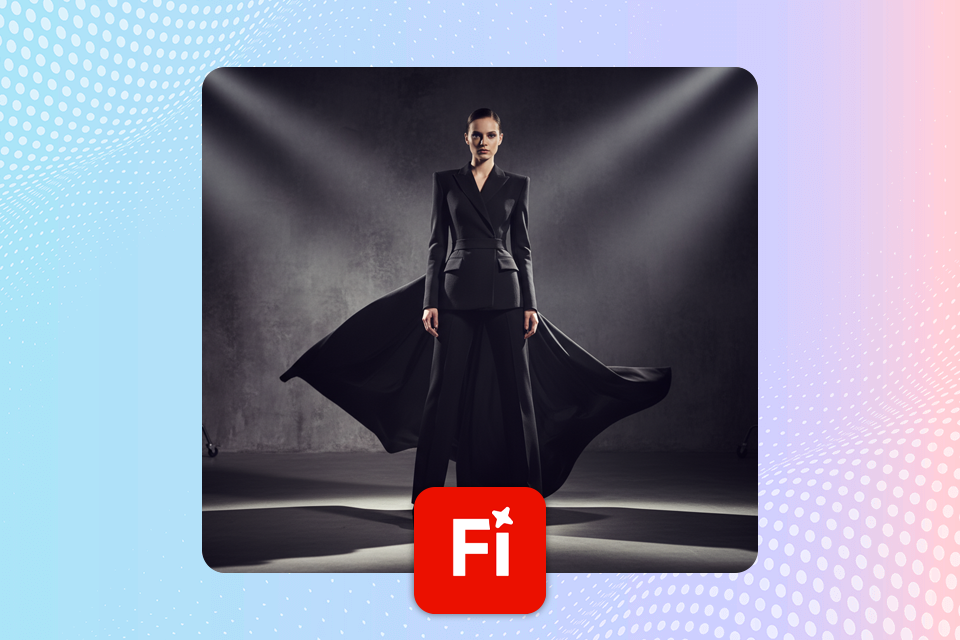
The result I got in Adobe Firefly
Main Adobe Firefly features:
Pricing options:
I tested DALL·E 3, and it did a great job. The AI art generator made a fashion model portrait with smooth lighting, realistic shadows, and no weird distortions. The model’s face looked natural, and even tiny details (like fabric folds and makeup) were done well.
Eva tried the same prompt in a different style, using dramatic lighting, and got similar results. But we both noticed one small issue: DALL·E 3 sometimes makes skin look too smooth, almost like an airbrushed photo. You can fix this later with editing, but it’s something to keep in mind.
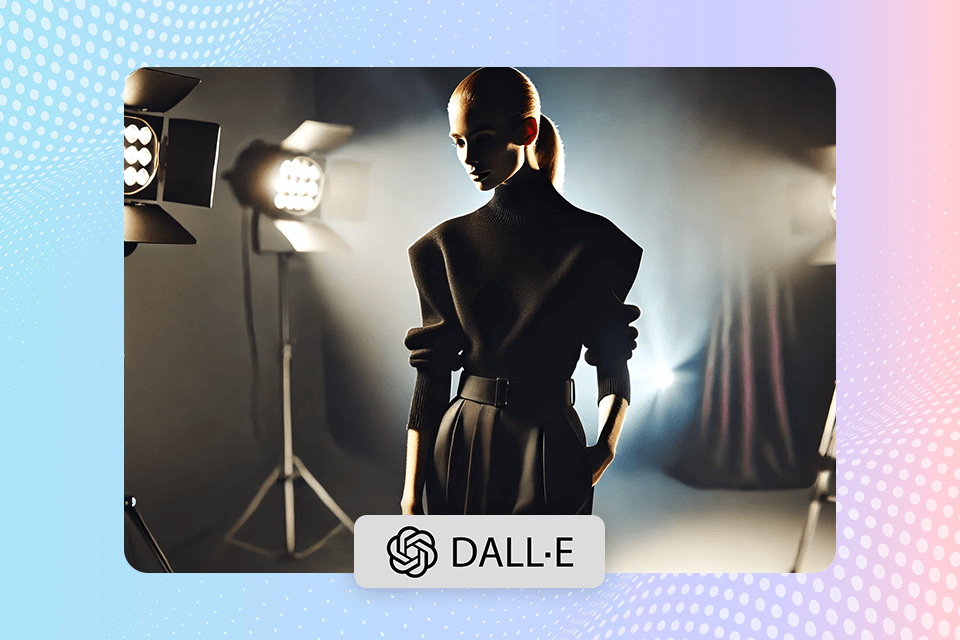
Main Dall-E 3 features:
Pricing options:
I wasn’t sure if Ideogram could make a realistic fashion portrait since it’s mostly known for text and graphic design. But I was impressed! The model’s outfit looked polished, and the lighting made the picture look professional.
However, some details weren’t perfect. The face looked a little flat, making it seem more like a CG image. While the AI picture generator avoided mistakes (like extra fingers), the hair still looked too smooth and slightly fake. It’s great for stylish AI portraits but not a full replacement for real fashion photoshoots yet.
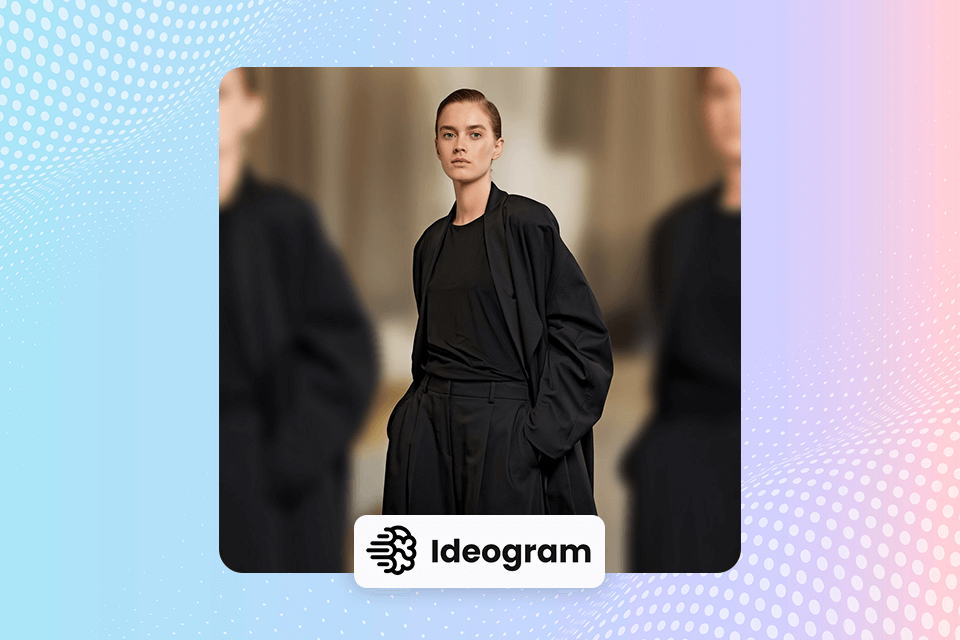
The result I got in Ideogram
Main Ideogram features:
Pricing options:
Midjourney made a cool portrait with high contrast and theatrical lighting, giving it a professional cinematic look. The model’s face looked perfect, with flawless skin and dramatic shadows, making it great for editorial pictures, but not very realistic.
Tetiana also tried Midjourney for a vintage-style fashion picture and had the same feedback - it’s amazing for making artistic images. Still, the result doesn’t always look like a real photo that I had in Freepik. If you want a cool, creative effect, this AI for image generation is awesome, but if you need an image that looks real, you might need to retouch it in Photoshop.
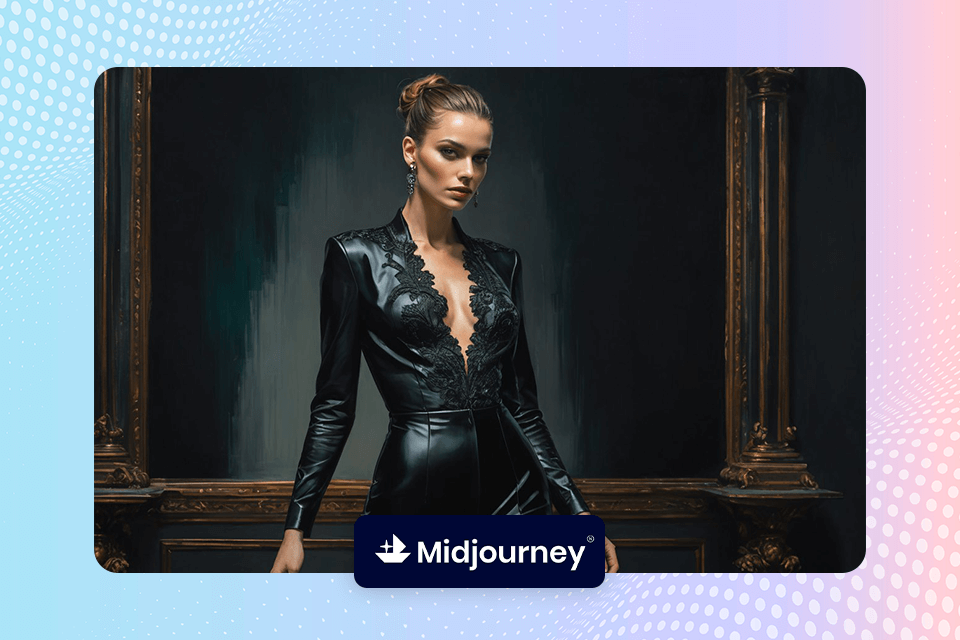
The result I got in Midjourney
Main Midjourney features:
Pricing options:
I tried an AI tool called Generated Photos to make a high-fashion portrait, but the result wasn’t great. The model’s face looked too stiff like they weren’t posing. The skin looked natural, but the eyes felt too perfect, almost fake. The lighting was nice and clear, but it didn’t have the dramatic feel of a real studio photo.
This AI picture generator is good for business headshots or marketing projects, but not for fashion photography. It’s more like a stock photo tool than something for creativity.
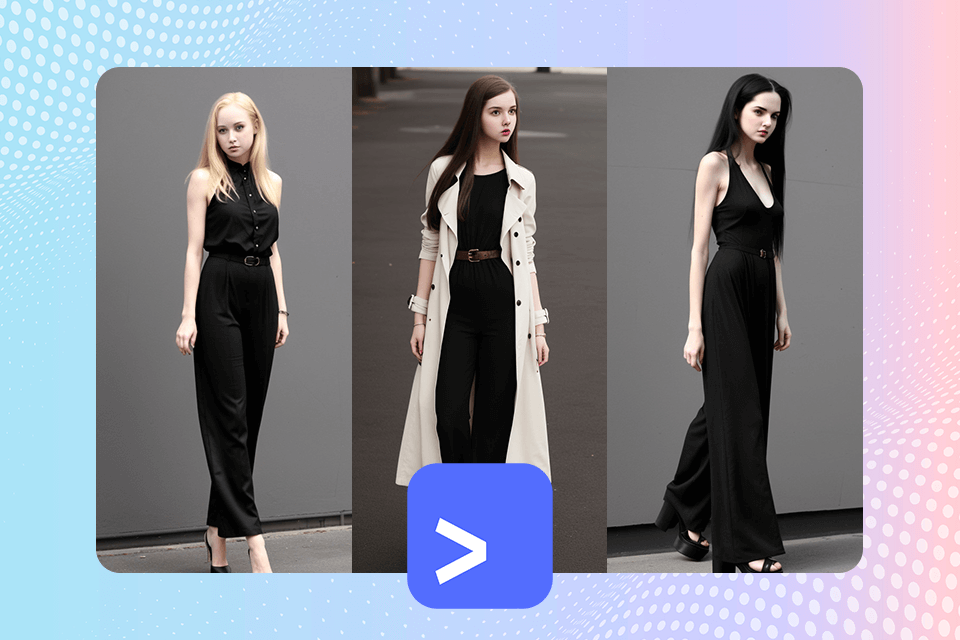
The result I got in Generated Photos
Main Generated Photos features:
Pricing options:
Typeface is mostly made for branding and graphic design, not realistic photos, but I wanted to see if it could make good ads from AI images.
The AI model it generated looked modern and stylish, but it didn’t look as real as images from other AI tools like DALL·E 3 or Freepik. However, Typeface was good at making the results ready for marketing.
I used it to create social media ads for FixThePhoto, and it helped me finish my work twice as fast. It had user-friendly tools to quickly change image sizes and layouts to fit different ad formats, so I didn’t have to do all that work myself.
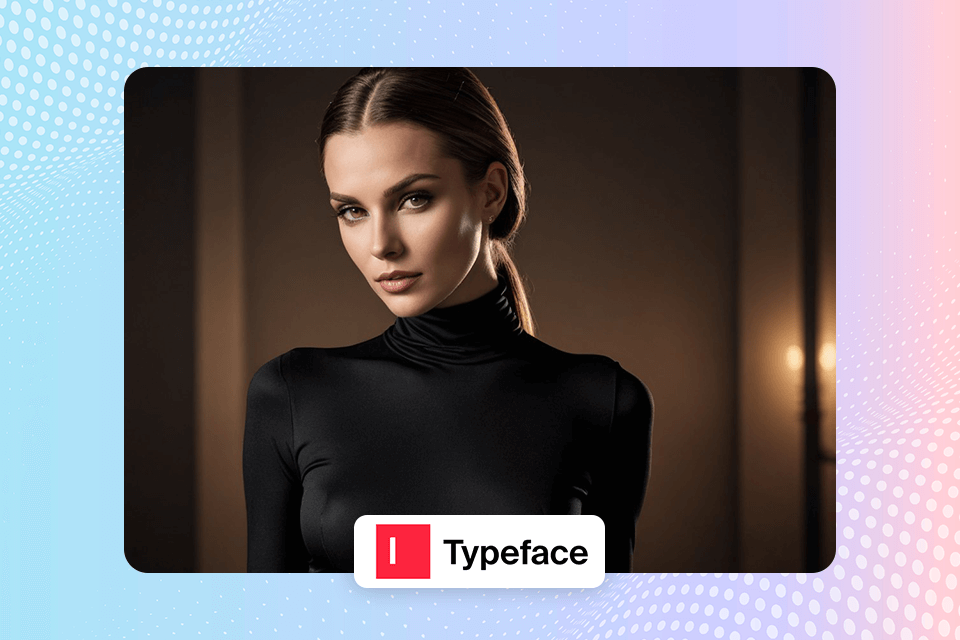
The result I got in Typeface
Main Typeface features:
Pricing options:
Astria is an AI picture generation software that lets you have more control over how your images turn out. I used it to make the fashion portrait, and I liked how I could change the lighting and colors to customize the look. The image looked stylish but, like many AI tools, the skin looked a little too smooth, and the whole image had a slightly computer-generated look.
If you want to customize your AI portraits, Astria is a good option. But if you want the image to look real, you’ll need to edit it a bit afterward.
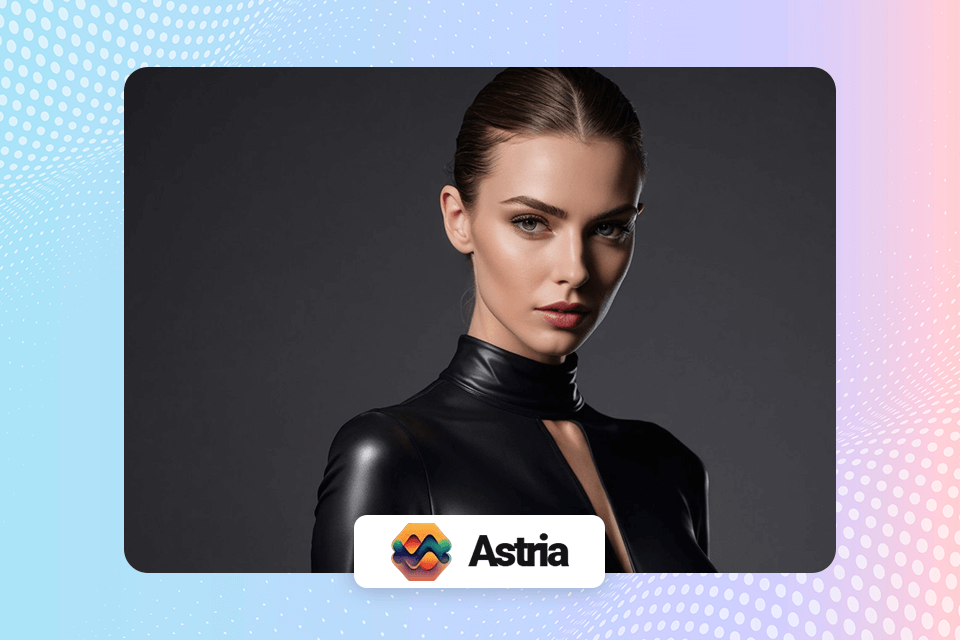
The result I got in Astria
Main Astria features:
Pricing options:
Flux 1 is a newer AI tool, so I wanted to see how well it could generate a high-fashion portrait. The results were actually really good. The lighting was dynamic, and the composition looked trendy, like from a magazine. The outfit looked sharp, and the face had clear details instead of looking smooth like in some AI images.
One small issue was the hair. Sometimes, the strands blended weirdly, making it look a little fake. It wasn’t a huge problem, but I had to fix it by retouching the image a bit.
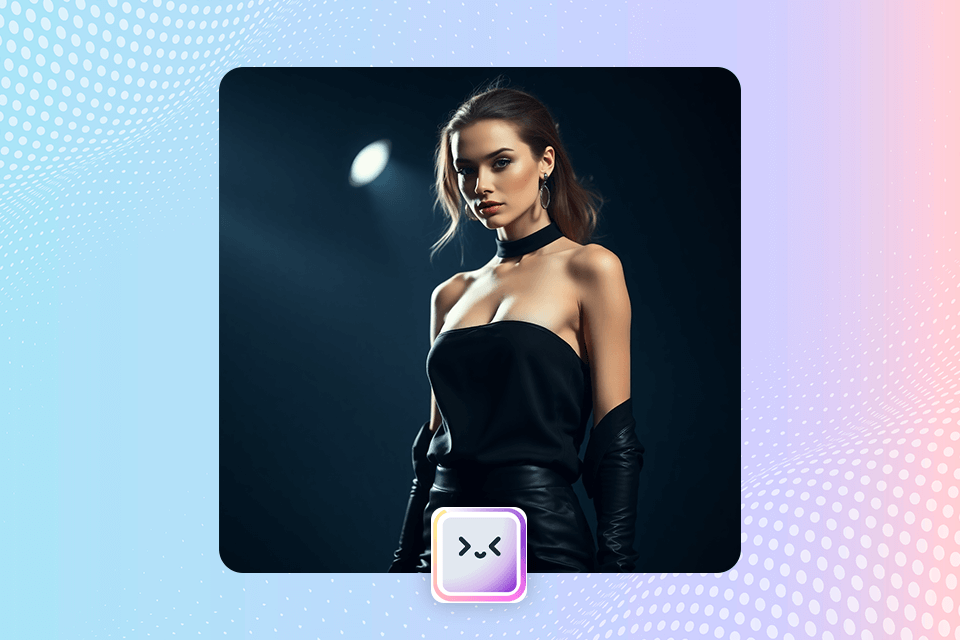
The result I got in Flux-1
Main Flux 1 features:
Pricing options:
GenApe AI did a pretty good job with the fashion portrait. One cool thing is that you can make small changes, like adjusting the face or lighting. The picture was clear, and the outfit looked nice, not fake and plastic-looking like some other AI-generated pictures. But sometimes, it made the skin look too smooth, like an airbrushed photo.
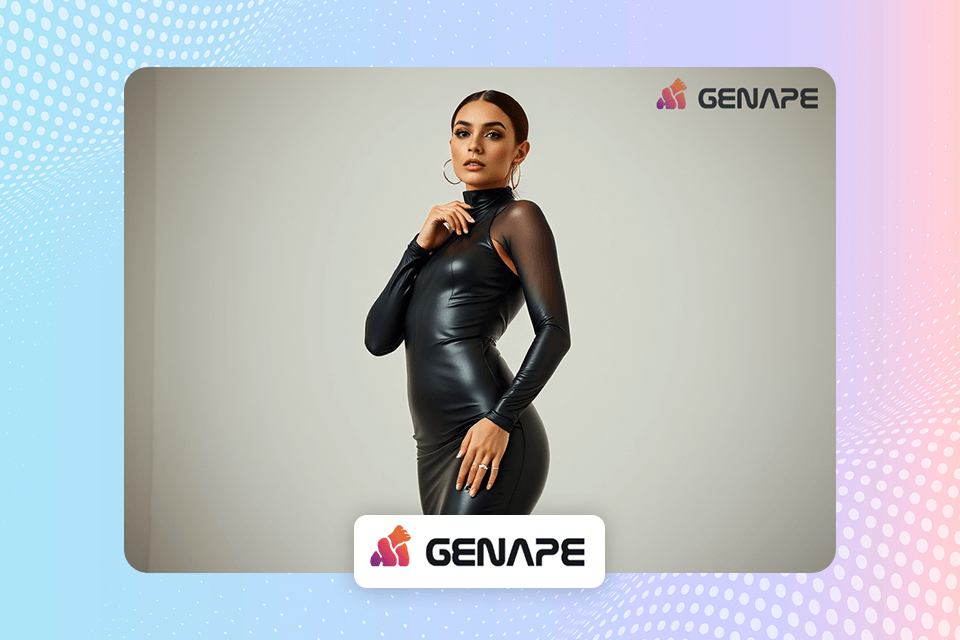
The result I got in GenApe AI
Main GenApe AI features:
Pricing options:
Narrato AI is mostly for writing and making marketing content, so I wasn’t expecting it to be great at creating pictures. I gave it a try and the picture it made was okay, but it wasn't detailed enough to look realistic and professional. From far away, the model's face looked real, but up close, the skin was too smooth, and the shadows weren’t perfect.
What makes Narrato AI useful is how well it works with marketing tools. It was easy to put the image into ad templates, so if you need quick pictures for ads or social media, it’s a good option. However, if you want super realistic photography, it might not be the best choice.
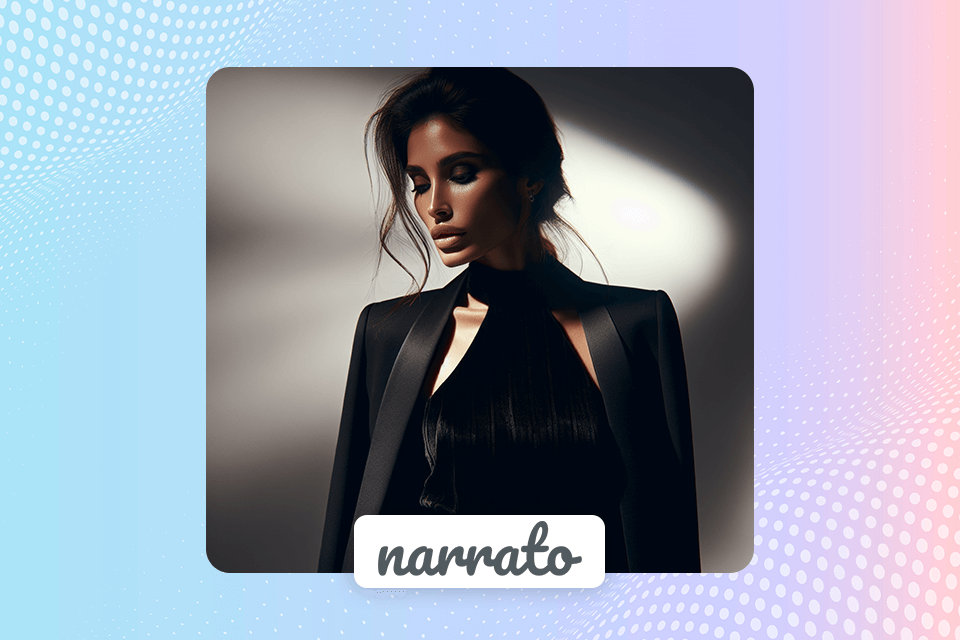
The result I got in Narrato AI
Main Narrato AI features:
Pricing options:
ProductScope AI is mainly for product pictures, but I wanted to see how well it could generate a picture of a person. The results were okay: some parts looked great, like the lighting and outfit details, but the face didn’t look 100% real. It was kind of CGI-like, and some shadows didn’t look natural.
One nice thing about this AI image generator is how easy it is to customize the results. I could switch backgrounds, change the clothes, and adjust the lighting in just a few seconds.
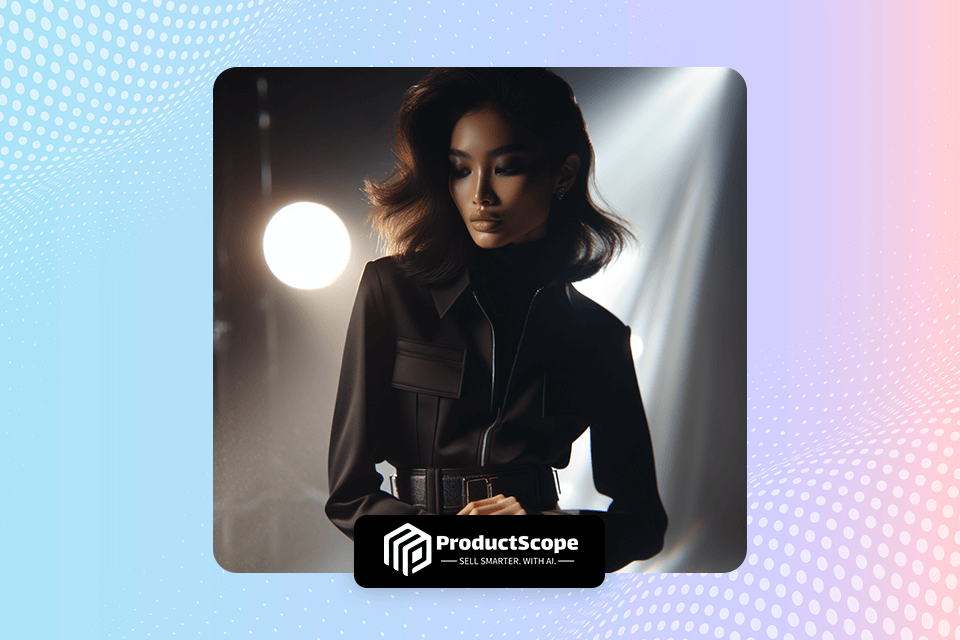
The result I got in ProductScope AI
Main ProductScope AI features:
Pricing options:
ComfyUI Web produced a high-resolution image with sharp detail and smooth lighting, and the customizable workflow enabled simple adjustment of the image generating process. Since it was web-based, I didn’t need to install anything nor use powerful hardware.
When I tried to make slight adjustments to her facial expressions, the output was unpredictable. The best way was to iterate on the output numerous times.
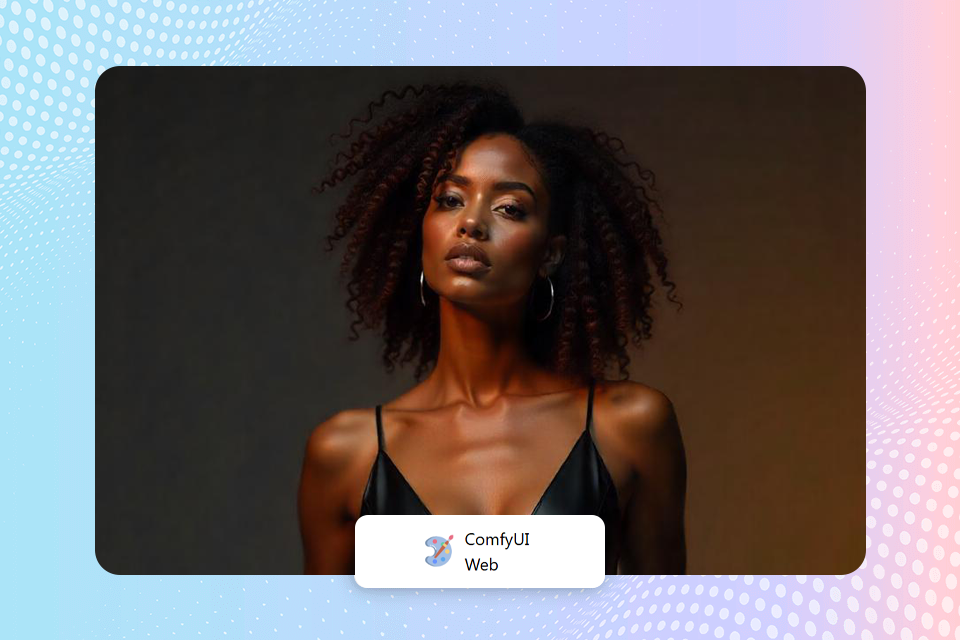
The result I got in ComfyUI Web
Main ComfyUI Web features:
Pricing options:
Unreal Person is made to create super realistic AI people, so I expected good results, and it mostly did a great job. The face had clear details, the lighting looked nice, and the skin colors looked natural. The eyes also had life in them, which is great because some AI faces look kind of empty.
However, what we weren't happy about was that sometimes, the faces weren’t perfectly even. In a few images, the features didn’t line up quite right, making them look a little off.
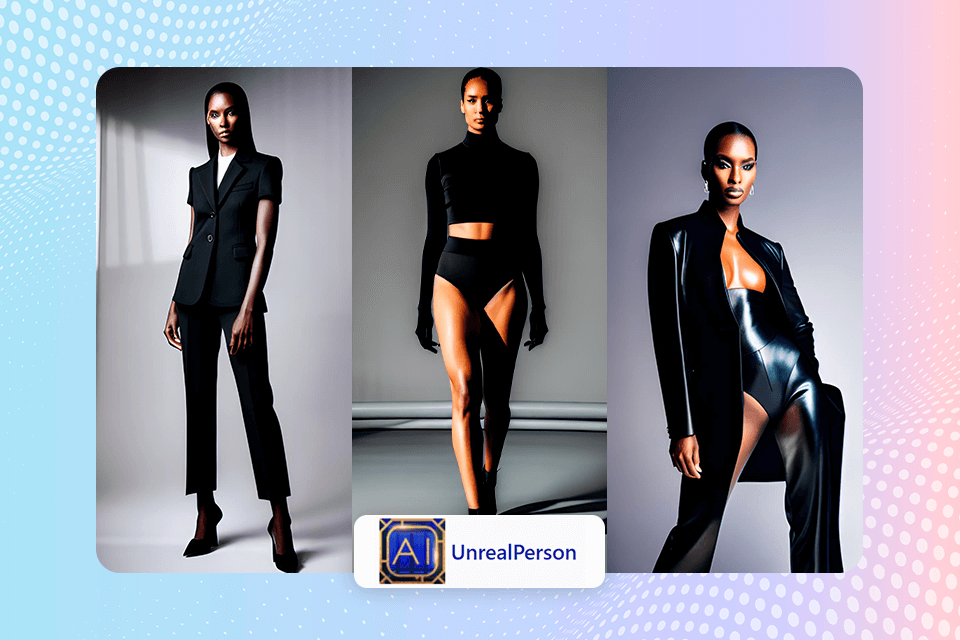
The result I got in Unreal Person
Main Unreal Person features:
Pricing options:
Leap generated a cool fashion portrait. The model’s face looked realistic, and the lighting made the image look like a page from a magazine. One of the best things about Leap is how well it handles textures. Clothes looked clear and detailed, and skin looked smooth but still natural.
However, this AI image generation software had trouble with complex prompts. When I tried to change small things like facial features, it didn’t always get them right. Leap works best when you let it do its thing and then edit little details later.
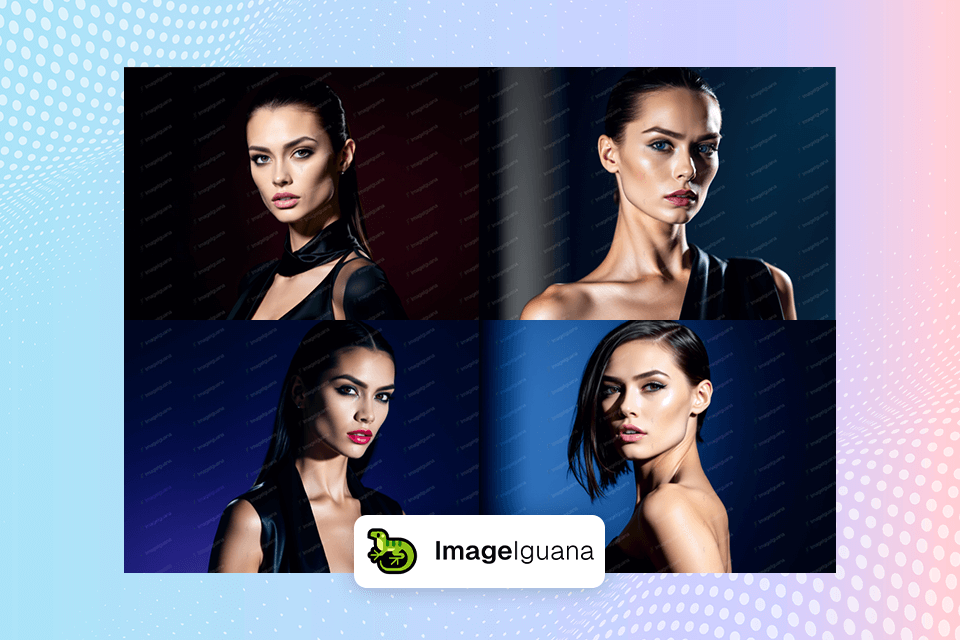
The result I got in Leap
Main Leap features:
Pricing options:
I was really surprised by how professional and visually accurate the results were from Vheer. Its AI image creator gave me moody lighting, soft shadows, and clean depth of field that looked as though it was photographed in an actual studio environment.
The textures on the clothes and the model’s body were largely accurate and the styling felt on purpose - something you do not usually find with free tools.
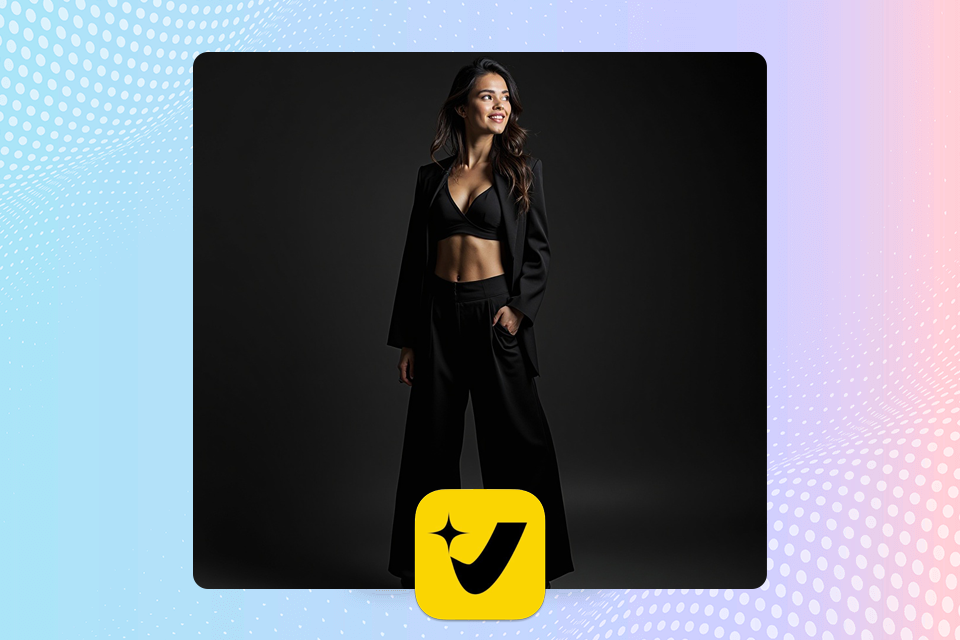
The result I got in Vheer
Main Vheer features:
Pricing options:
I’d always thought of Hypotenuse AI primarily as a tool for generating product descriptions and enriching ecommerce data, so I was pleasantly surprised by how capable its visual tools are. The built-in AI image editor handles background removal, cropping, and upscaling with ease.
What really stood out, though, is the AI product photography feature: it can virtually dress models in your items, drape garments convincingly, and keep the focus on the product, producing catalog-ready shots shots that look natural. And while Hypotenuse AI’s product image generation and editing tools excel with apparel, the platform works just as well for other product categories, such as furniture or industrial tools.
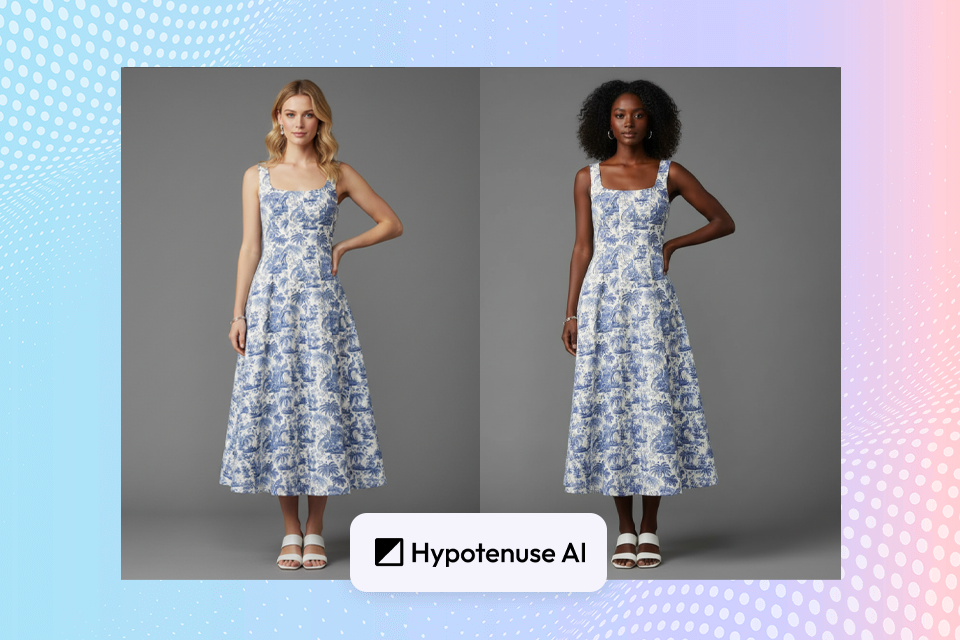
The result I got in Hypotenuse AI
Main Hypotenuse AI features:
Pricing options:
To compare different AI image creators, our FixThePhoto team tested them using the same descriptions to see which one would create the best pictures.
We used a fair process for testing: we typed the same description into each AI tool, checked how good the results were, and gave them scores based on how real they looked, how well they followed the description, and how detailed they were. The test prompt was: a stylish model in a black outfit, dramatic studio lighting, soft shadows, and a blurry background.
Some AI tools, like DALL·E 3 and Freepik, created realistic pictures with only a few fixes needed. But others had problems, like hair that looked fake, skin that was too smooth, and hands that often looked weird.
We also tested how fast and easy each tool was to use. Ideogram was great for adding text and artistic designs but wasn’t as good at creating realistic images. Photoshop’s AI was best for improving AI-generated images instead of creating them from scratch, making it the top choice for professionals who want to edit their work.
Overall, AI image generators are getting better, yet none of them are perfect. Some produced great pictures right away, while others needed a lot of editing. Our team found that AI is a powerful tool, but human creativity is still needed to produce images.